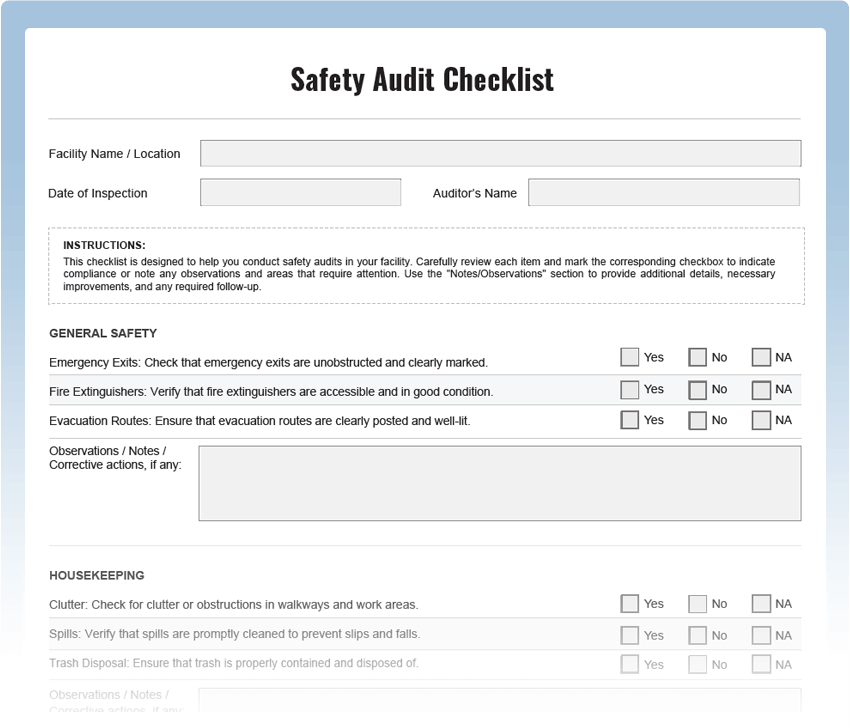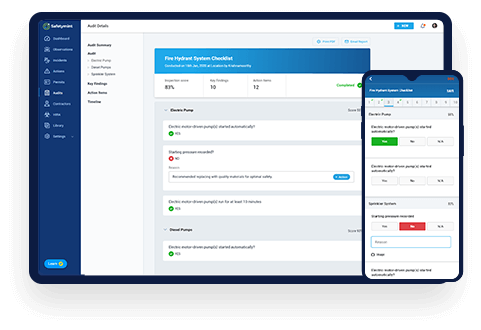Safety Audit Checklist
Enhance safety and compliance with our comprehensive Safety Audit Checklist. This free PDF template is designed to help you conduct thorough safety audits to assess and improve safety practices within your organization. By conducting regular safety audits, businesses can identify areas of improvement, address safety concerns, and create a safer work environment for employees and stakeholders.
Digitize this Checklist on Safetymint
- Create unlimited, customized checklists
- Add Actions, with automated reminders
- Works seamlessly with or without internet
- Access via web browsers, mobile or tablets

What is a Safety Audit Checklist?
A Safety Audit Checklist is a systematic tool used to evaluate safety practices, procedures, and compliance within an organization. It includes a series of checkpoints designed to assess various aspects of safety management, such as hazard identification, employee training, emergency preparedness, and regulatory compliance. Regular safety audits are crucial for maintaining a high standard of safety, preventing incidents, and ensuring legal compliance.
Key Areas to Inspect in a Safety Audit Checklist:
- Hazard Identification: Evaluate the identification and assessment of workplace hazards.
- Safety Policies and Procedures: Review the implementation of safety policies and procedures.
- Employee Training: Assess the adequacy of safety training and awareness programs.
- Emergency Response: Verify the readiness and effectiveness of emergency response plans.
- Safety Equipment: Inspect the availability and condition of safety equipment.
- Record Keeping: Review safety documentation and incident records.
Common Safety Audit Checklist Findings:
Frequent issues found during safety audits include:
- Lack of Hazard Communication: Inadequate communication of workplace hazards to employees.
- Outdated Procedures: Use of outdated or incomplete safety policies and procedures.
- Inadequate Training: Employees not adequately trained to handle emergencies or hazards.
Safety Audit Checklist Best Practices:
- Scheduled Audits: Conduct regular safety audits at predefined intervals.
- Thorough Assessment: Ensure a comprehensive review of all safety aspects.
- Management Involvement: Involve management in safety audit processes and decisions.
- Corrective Action: Address identified safety deficiencies with appropriate corrective measures.



